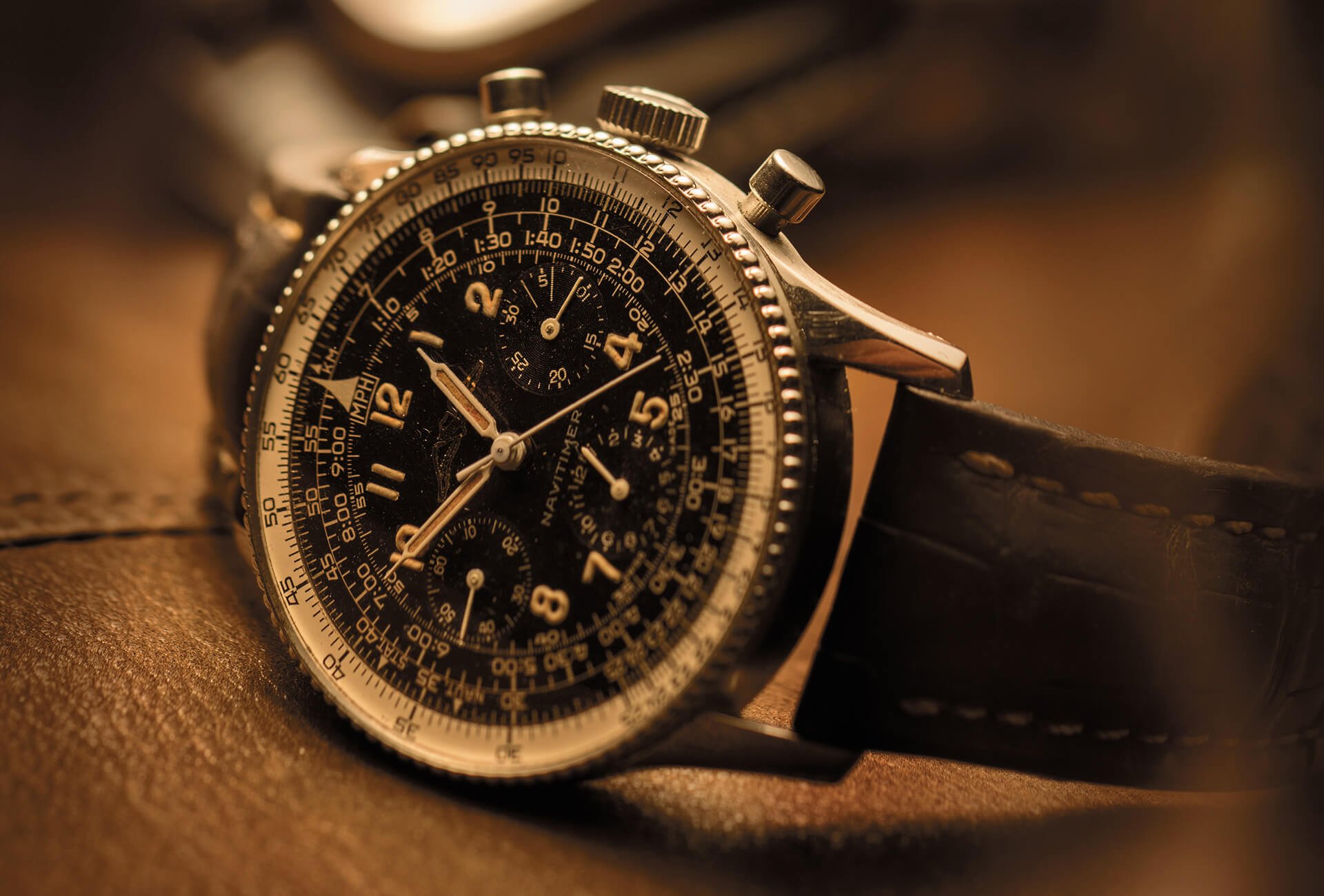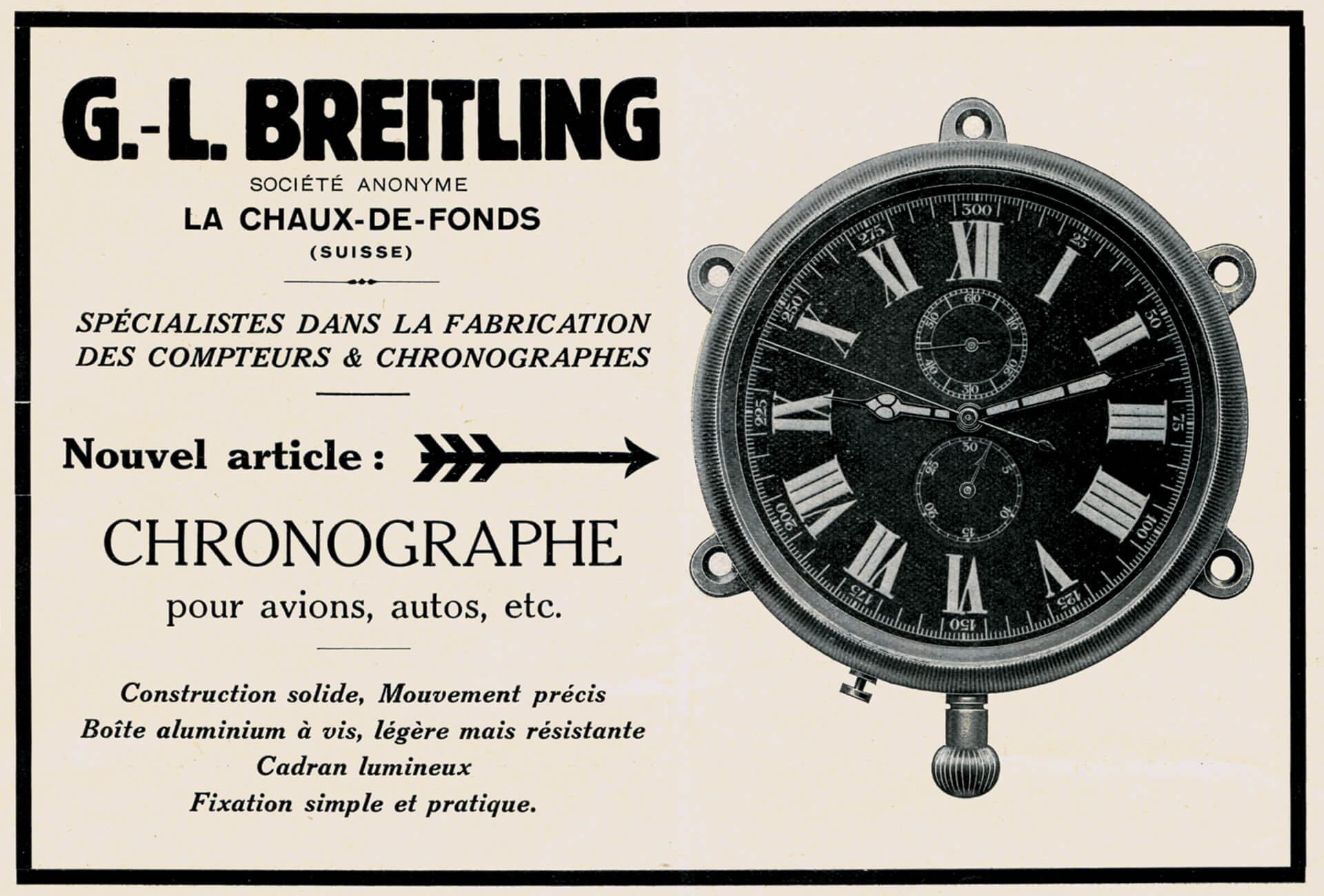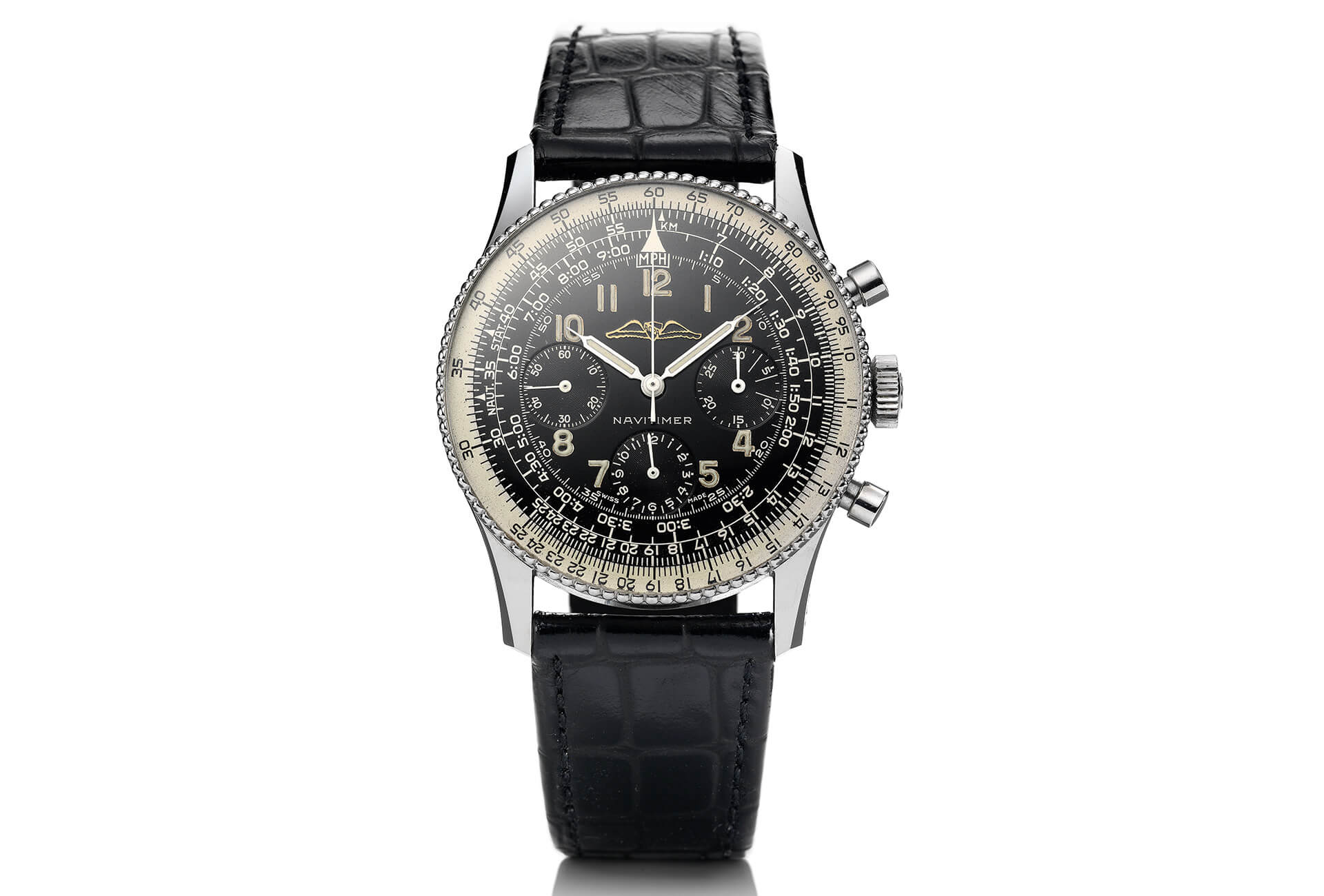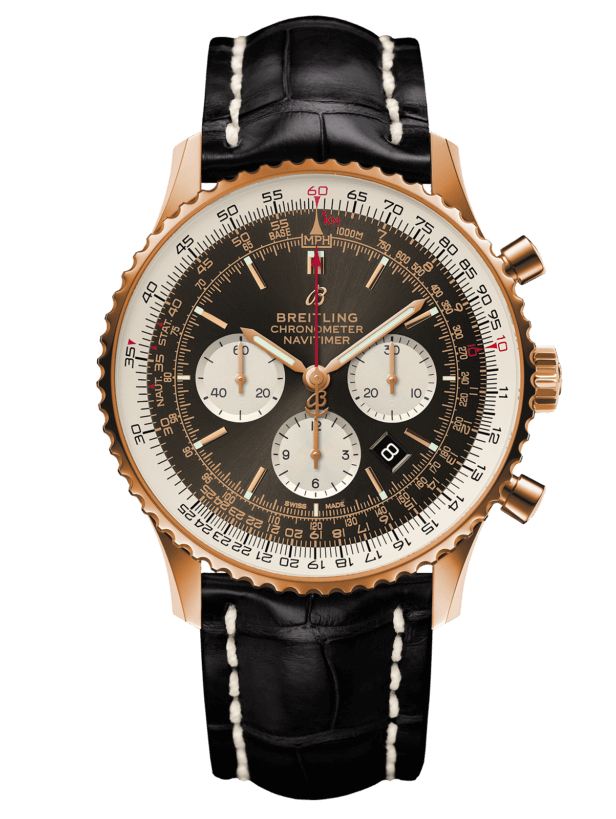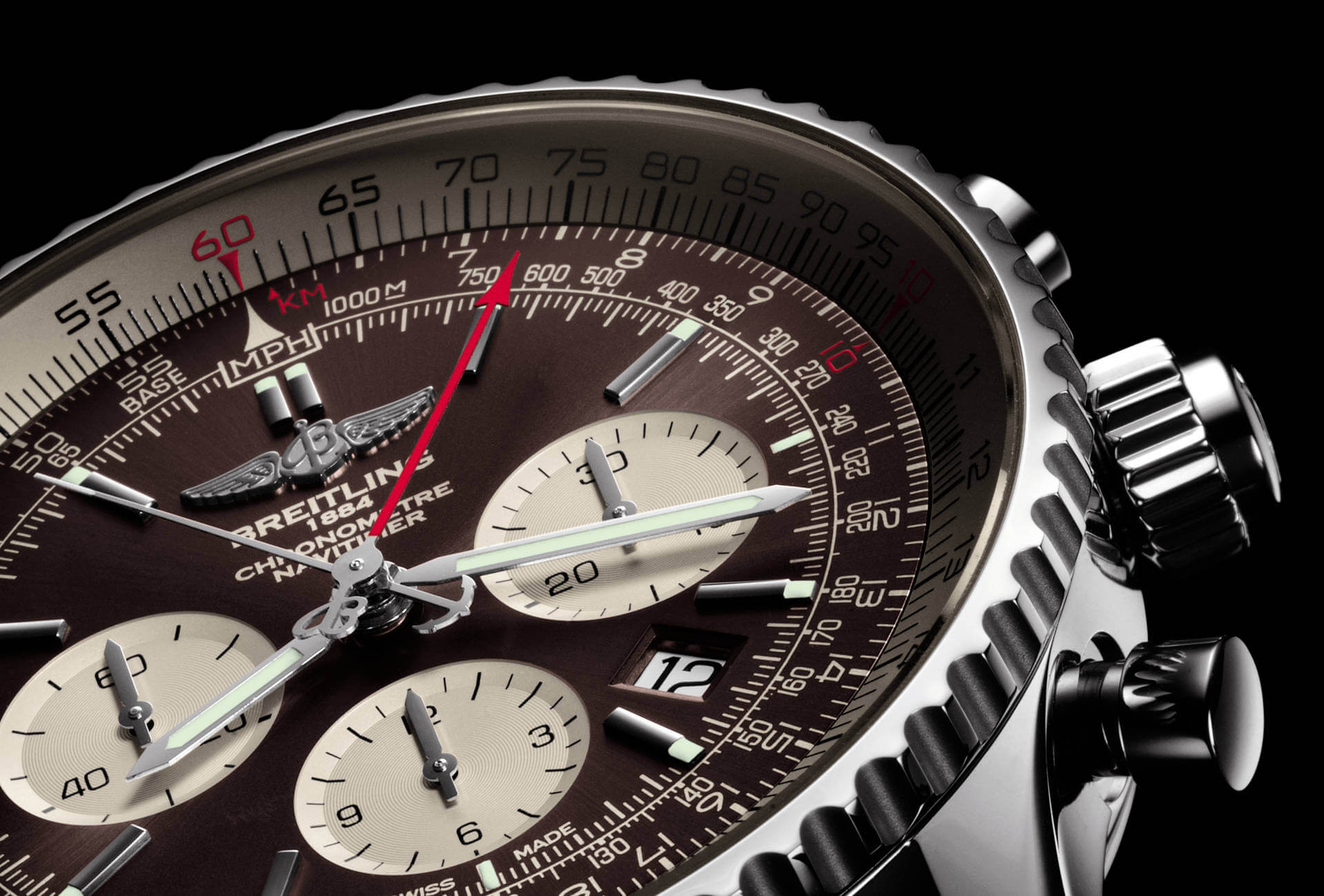His eyes light up, goosebumps break out along his arms, his heart skips a beat. “He” being the watch enthusiast, the aviation geek, the passionate pilot for whom the very mention of this high-flyer, introduced to the world by Breitling in 1952, sends emotions into overdrive. It’s an important part of kit, after all, with that famous slide rule bezel, thanks to which the wearer can perform some twenty calculations of use during airborne navigation. It’s a flight computer for the wrist, adopted by pilots around the globe from the moment it was launched.
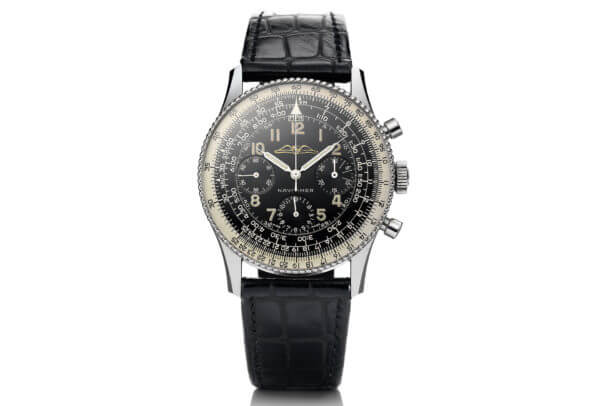
Ready for take-off
While the Navitimer began a new chapter in Breitling’s history, as innovative as it may have been it was the logical follow-on from the brand’s longstanding ties with aeronautics. From the very first wristwatches, Breitling chronographs enjoyed a reputation for robustness, reliability and functionality in professional flying circles. The Manufacture’s credentials include the invention, in 1915, of the independent chronograph pusher (prior to this, chronographs were operated by the crown), followed in 1923 by separate start/stop and reset functions. Breitling further improved the chronograph’s functionality in 1934 when it introduced a second pusher. Pilots were unanimous and, unsurprisingly, the brand was awarded contracts to supply the British Royal Air Force in 1936, before joining the ranks of the United States Air Forces six years later.
The world of aviation embraced this navigation tool, which enabled pilots to perform some two dozen calculations and conversions.
The gamechanger: the slide rule
In the race for innovation which, brands hoped, would earn them kudos with flight professionals, Breitling played its trump card in 1942 when it launched its now famous circular slide rule on a Chronomat. Pilots couldn’t get enough of this practical function which, in a considerably improved version, equipped the Navitimer chronograph as of 1952. The world of aviation embraced this navigation tool, which enabled pilots to perform some two dozen calculations and conversions while airborne. Multiplication, division, converting miles/kilometres, Fahrenheit/Centigrade, gallons/litres, minutes/hours, seconds/minutes or currencies, tachymeter, pulsometer, metronome, fuel consumption for planes and cars, speed per hour, minute or second, rate of climb or descent, distance in climb or descent, square root, cross-multiplication, compass… the list of possibilities goes on. As well as providing such a full range of functions, Breitling made sure its slide rule was simplicity itself to use, requiring no special tool or accessory: just two graduated scales. This was all the convincing the Aircraft Owners and Pilots Association needed to choose the Navitimer as its official watch. Its AOPA initials even combined with Breitling’s winged logo on the dial of the very first Navitimer, in 1952.
In 1962, the now famous chronograph again made history when it was worn by astronaut Scott Carpenter.
From sky to space
Having conquered the skies, Breitling continued on the wings of success and sent the Navitimer spinning into space. In 1962, the by then much-feted chronograph once more made history as the first wrist chronograph to travel into space when the astronaut Scott Carpenter, strapped inside the Aurora 7 capsule, wore one on the NASA Mercury-Atlas orbital mission. The subsequent production model, named the Cosmonaute, reprised the 24-hour dial, rather than the usual 12-hour dial, that had enabled Carpenter to keep track of daytime and night on Earth. But even the aura of this storied model was unable to stave off the 1970s quartz crisis that was bubbling in the background. Breitling counterattacked with a digital Navitimer, which went down like a lead balloon. Undeterred, it continued to manufacture the classic Navitimer throughout the quartz years, though with nothing approaching earlier success.
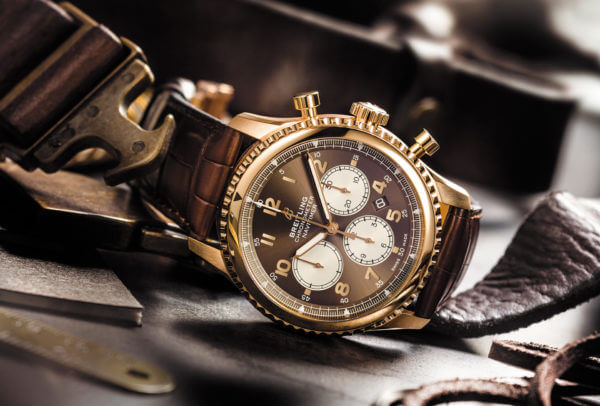
It wasn’t until the early 1990s that the Navitimer returned to the horological spotlight, and almost another two decades before Breitling equipped it with its in-house Breitling 01 movement. This legendary timepiece remains a lynchpin of the brand’s collections, with diameters ranging from 38mm to 46mm, with or without chronograph but most of the time featuring that famous circular slide rule – an ingenious invention which, for more than 65 years, has turned heads and won hearts among aviation enthusiasts.








